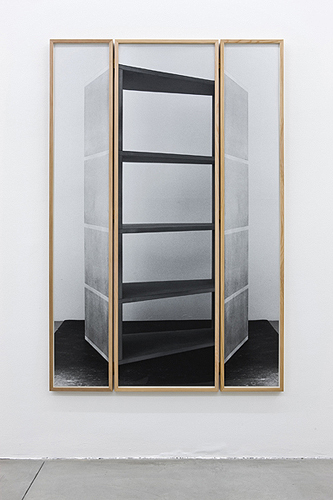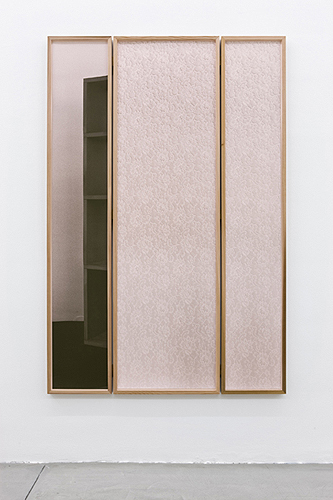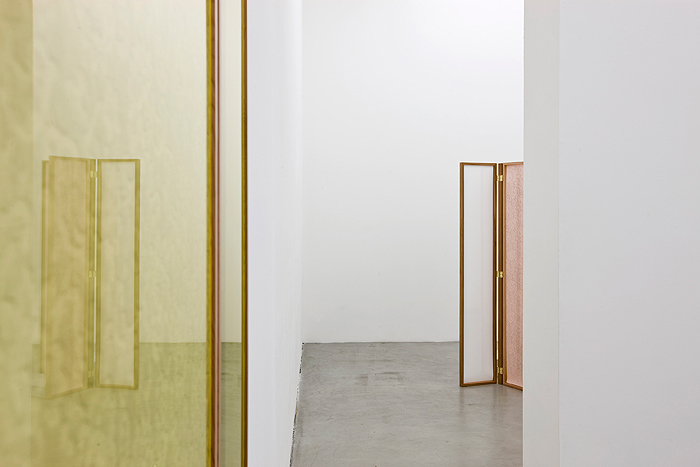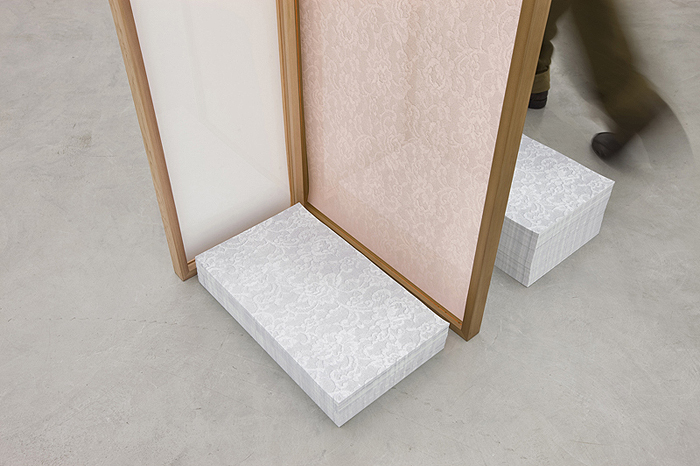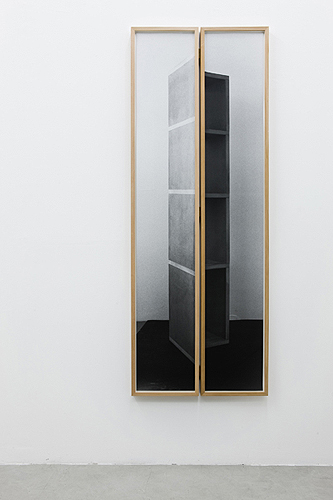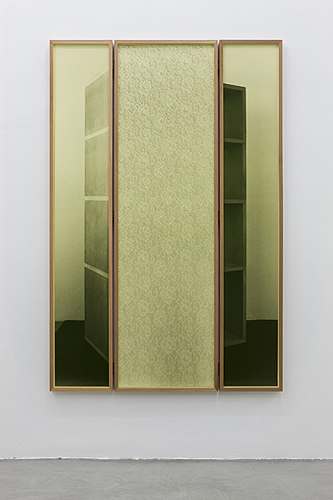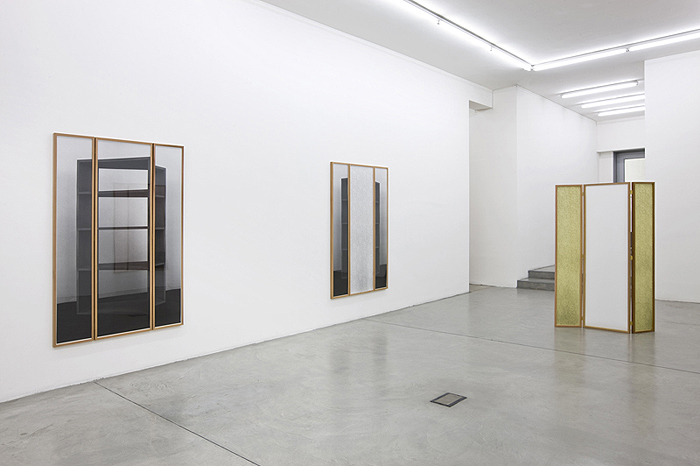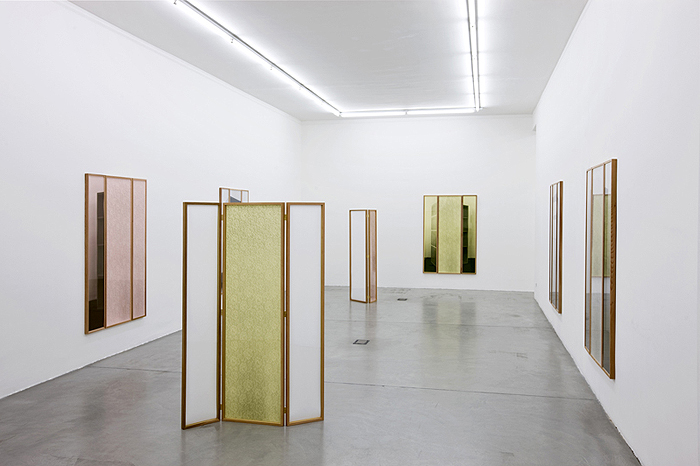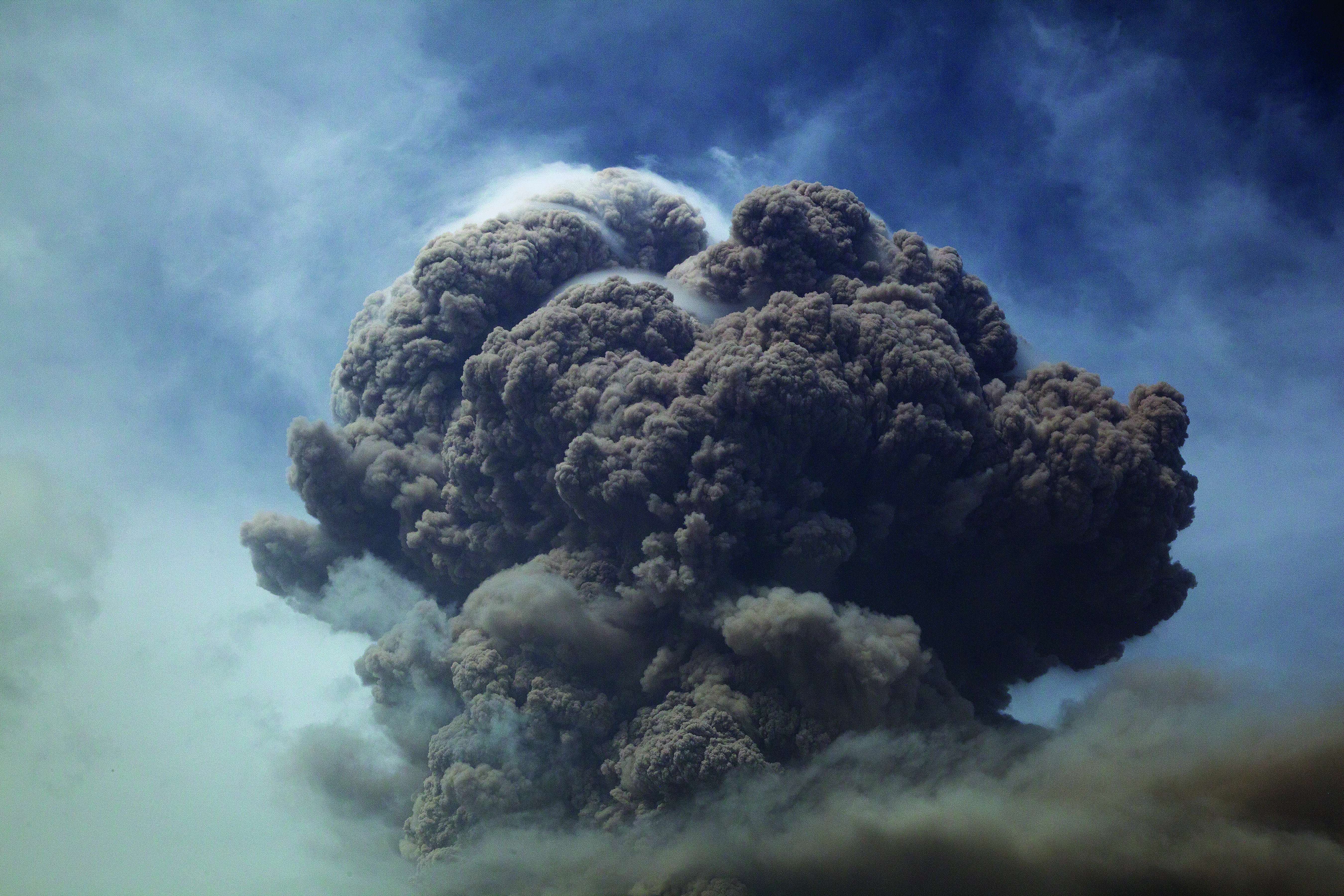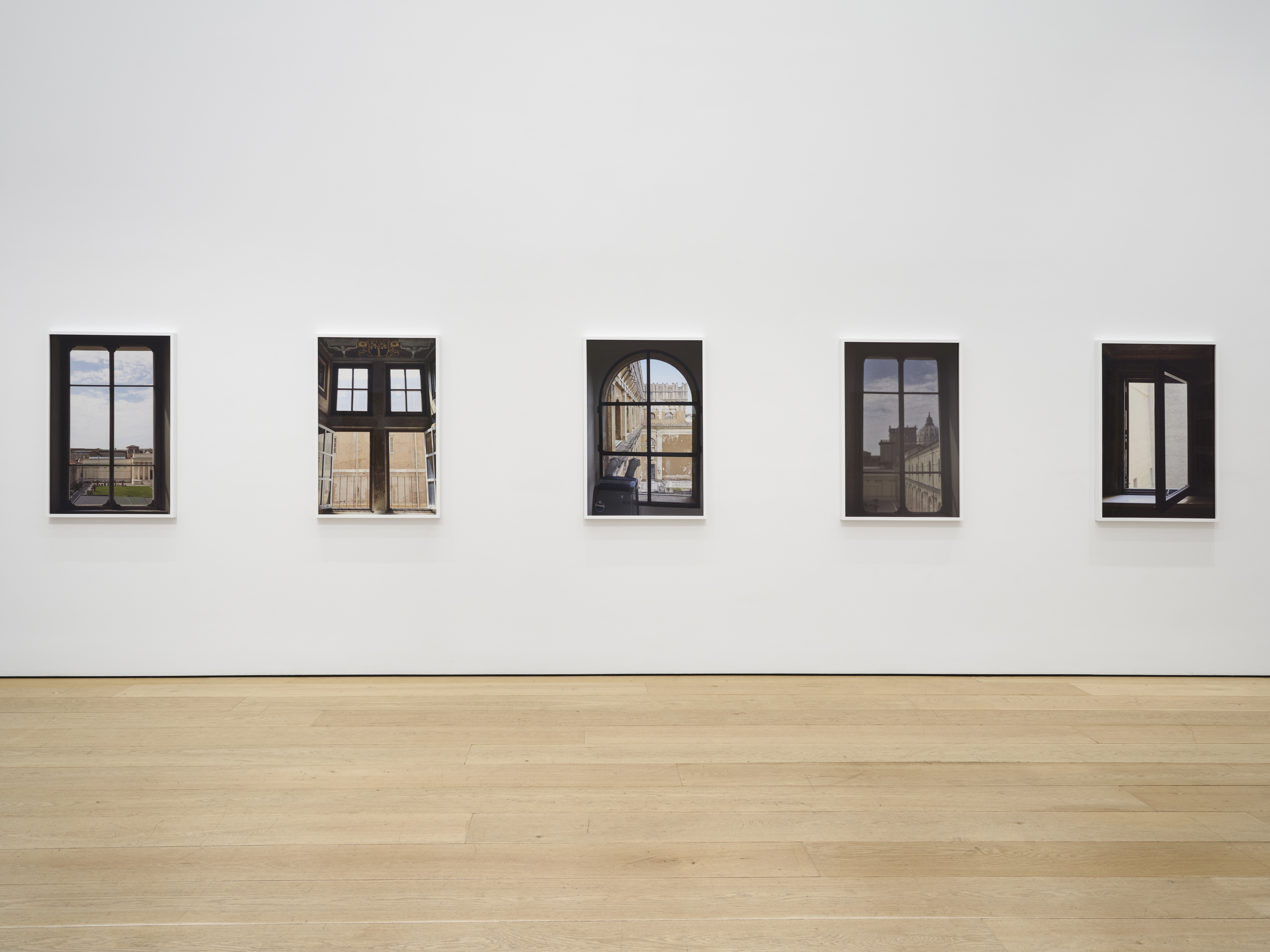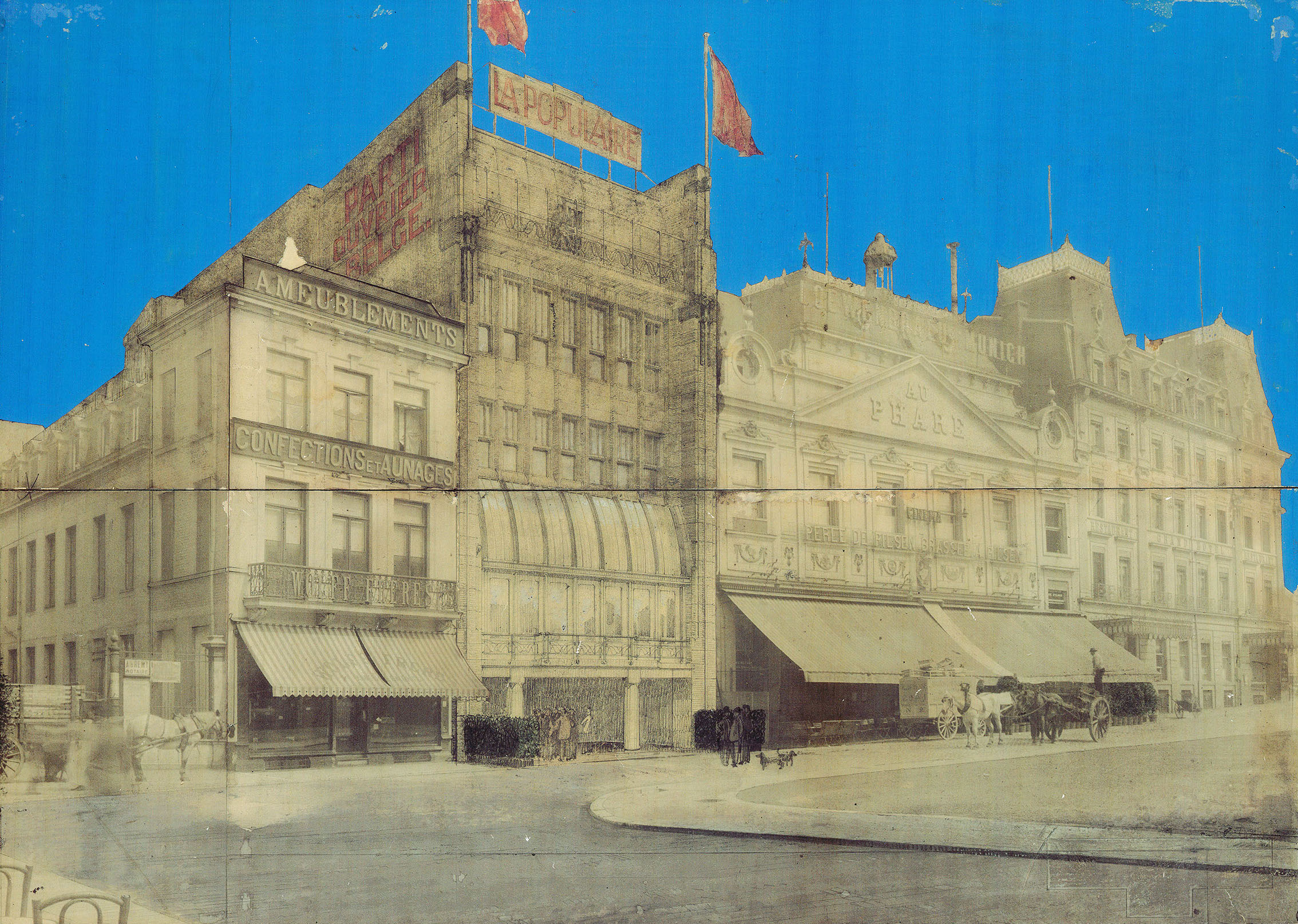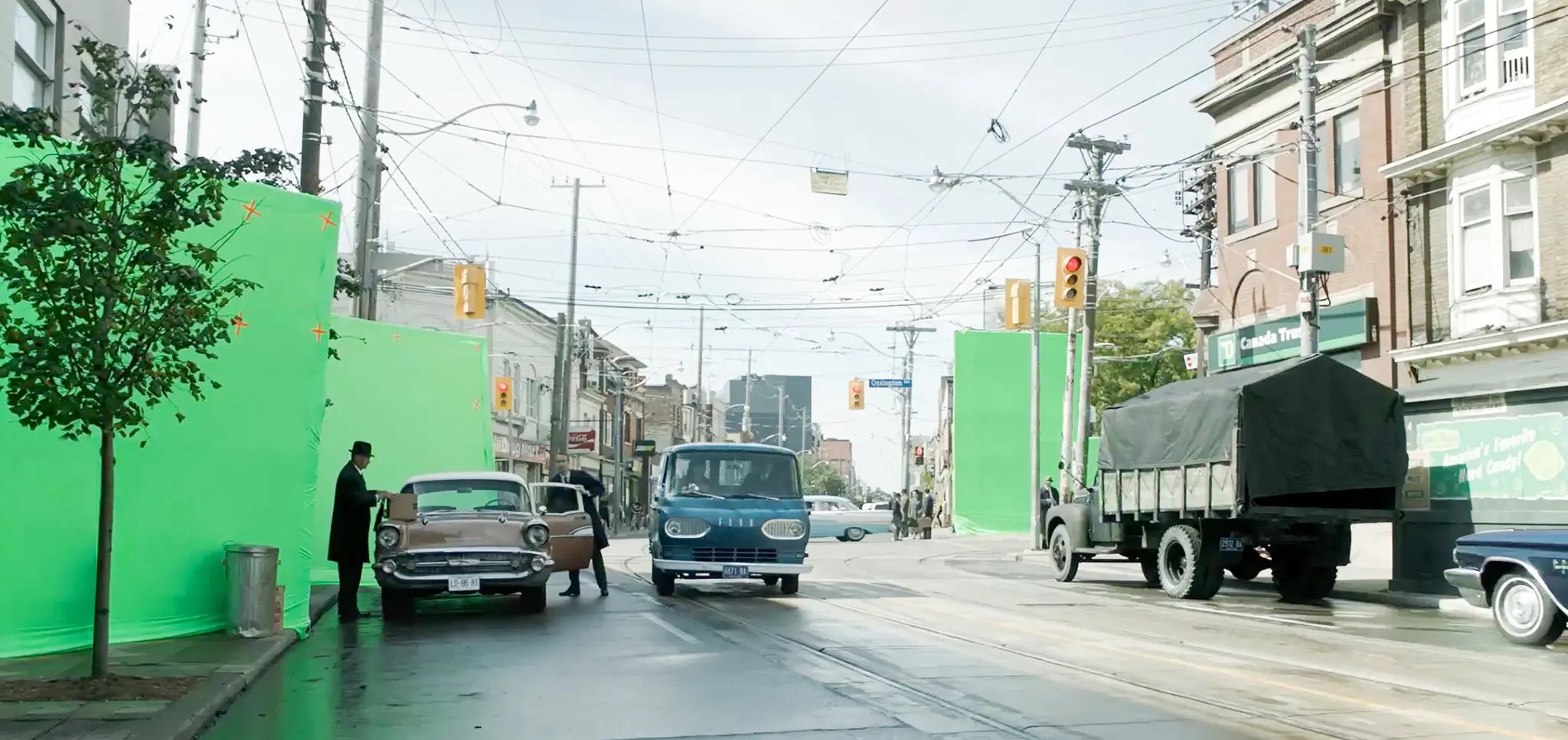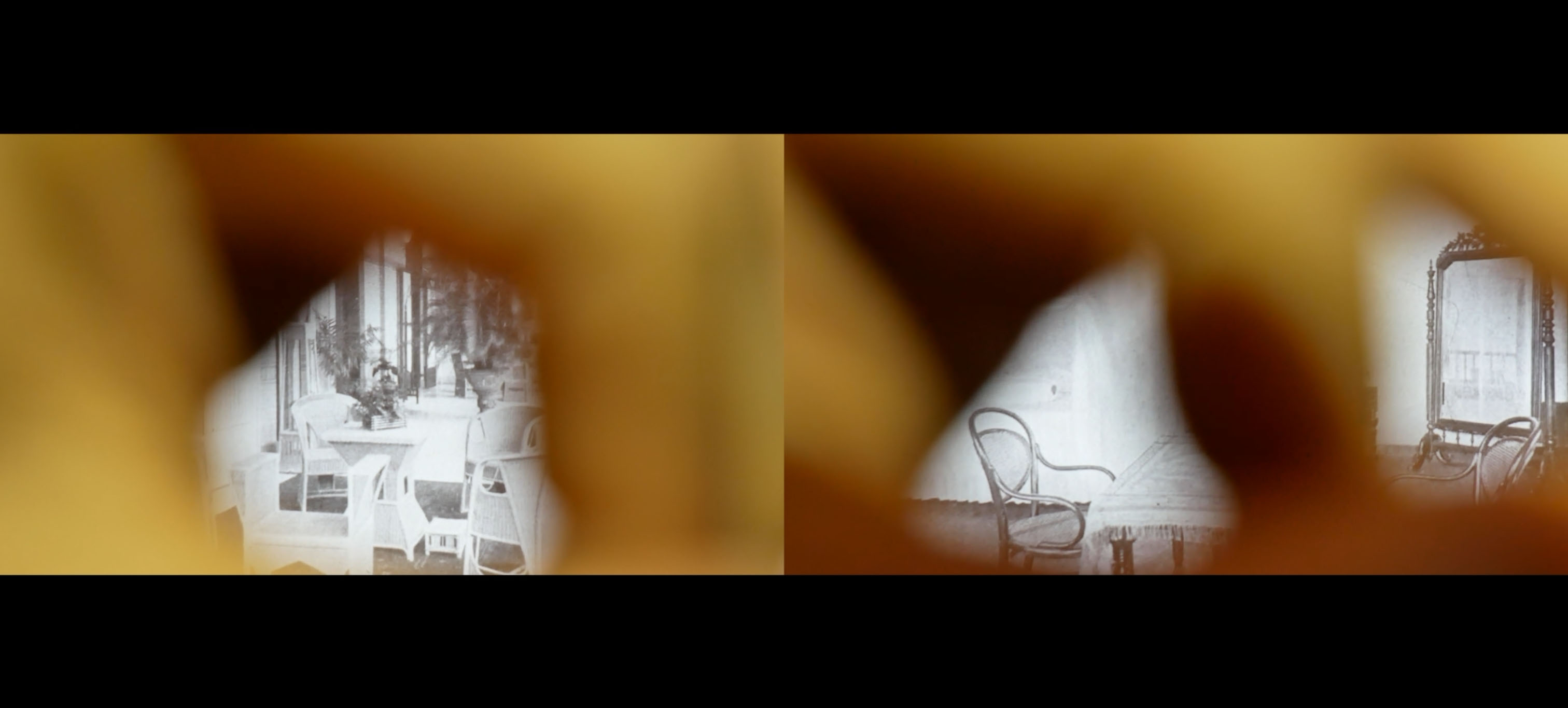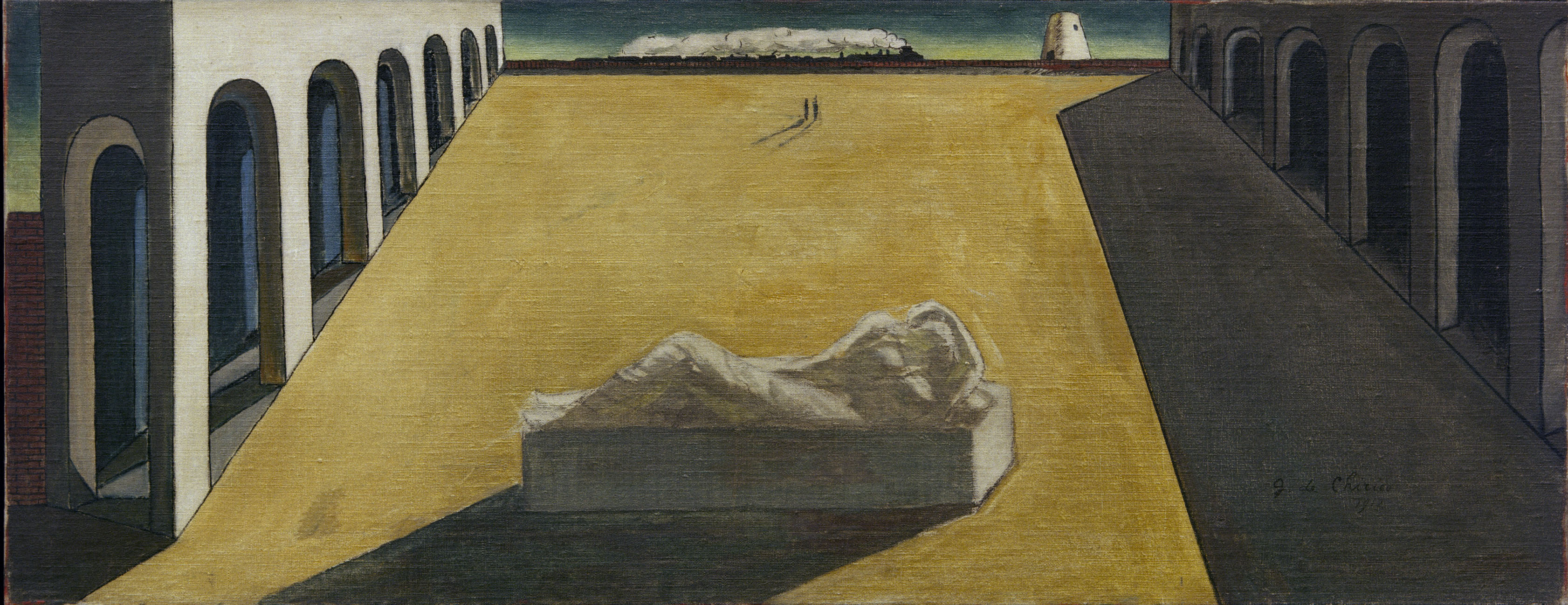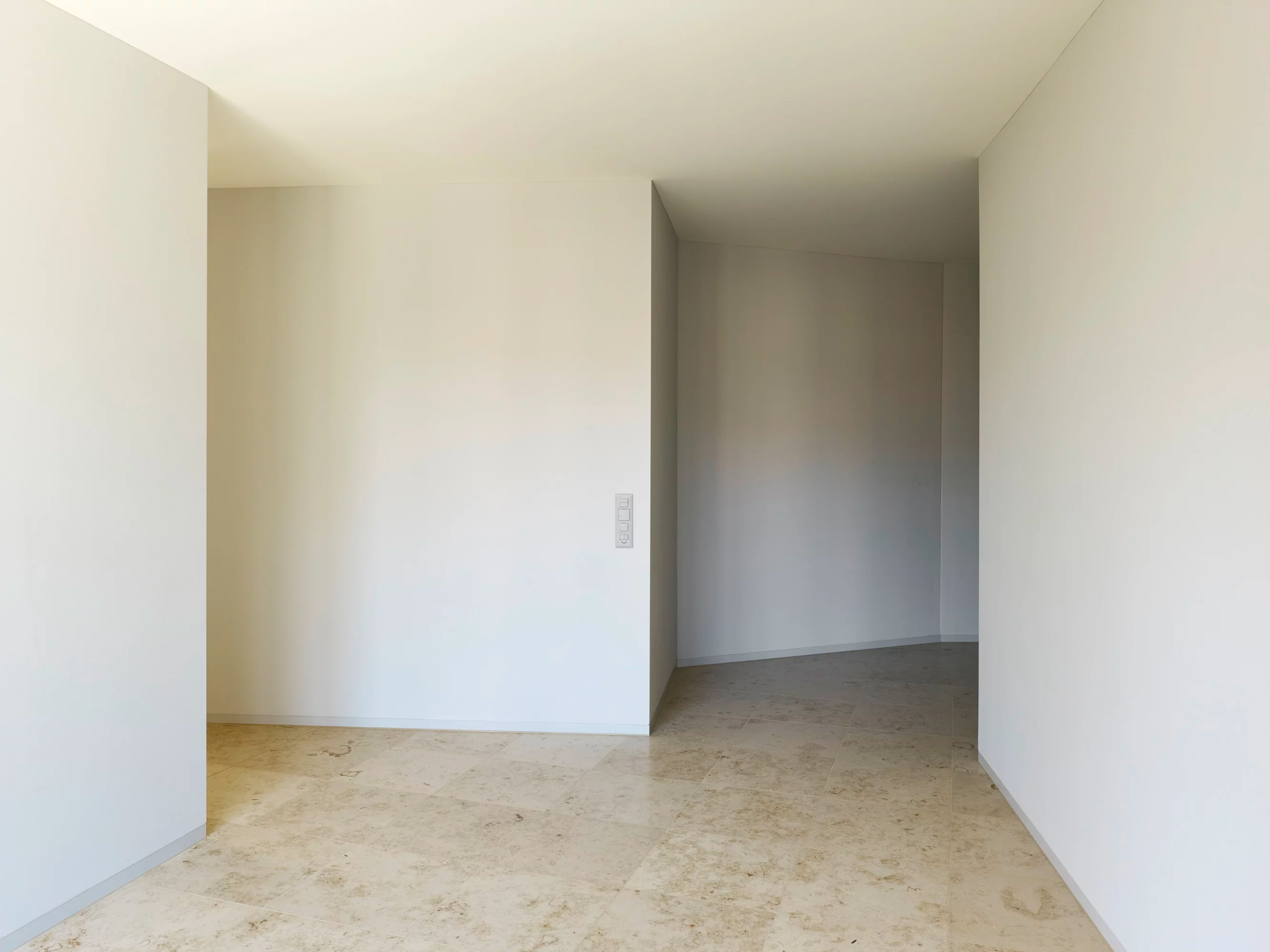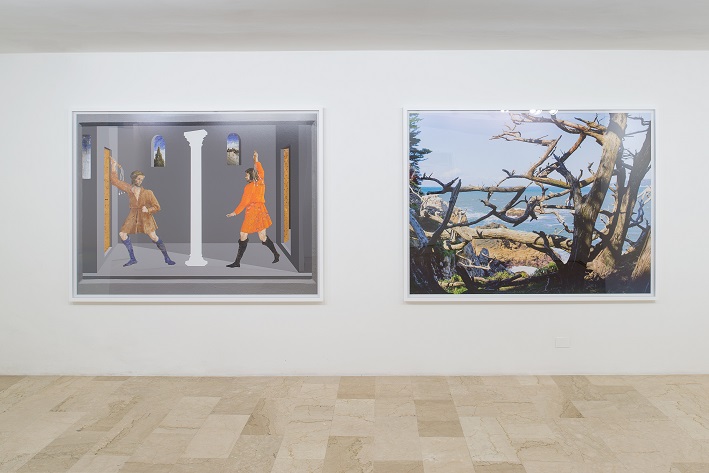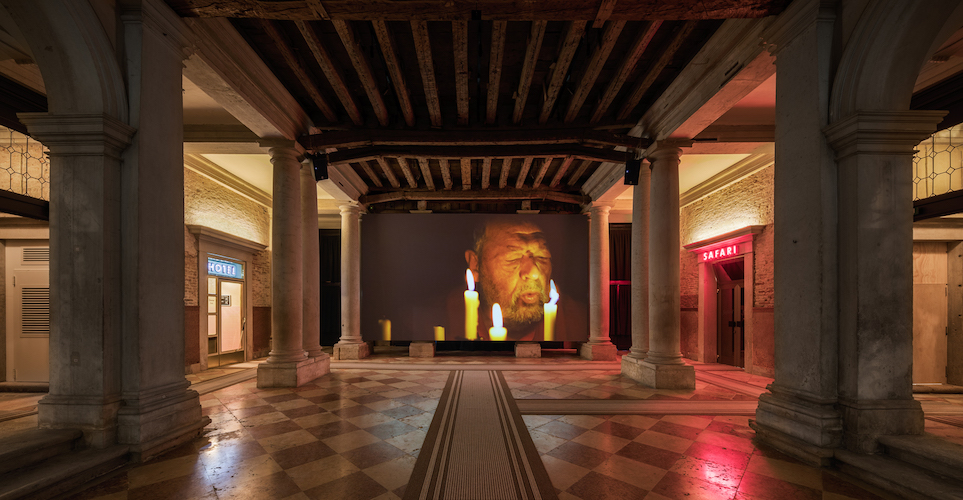November 16–January 14, 2012
THE INTERIOR
"In truth we are men because we slide towards the useless material; otherwise we would be reduced to the biologically perfect condition of the better-organized colony of insects, where nothing happens that is not useful to material life," wrote Carlo Mollino (1905–1973) in "Utopia e Ambientazione" (Utopia and Setting), an article published in two consecutive issues of Domus in 1949. It was not the first time that the architect employed quasi-anthropological observations in praise of inutility. During a public debate (1), Mollino continued that the only way to transcend technique was to slide towards uselessness. He wanted to open a way for the creation of non-necessary elements that, according to his own words, animate buildings, objects, and creations alike. His statement can be interpreted as a subtle critique of rationalism and an early anticipation of postmodernism. It may also justify the interest in Mollino, who has been recently re-presented as a figure whose transdisciplinary vocation largely exceeded the field of architecture, and whose propensity towards aesthetics caused such widespread fascination.
Becky Beasley’s exhibition "The Outside," part two of the trilogy "Late Works," is a visual digest of her survey on Carlo Mollino, and it provides yet another contribution to reinterpreting the architect. In particular, Beasley analyzes how Mollino used photography as a privileged medium relating to private environments, and how these were mostly characterized, alas, by all those things that were not strictly useful or functional. In the exhibition, this relationship is slowly revealed through the serial, repetitive use of ornamental, almost baroque patterns.
VARIATIONS ON A THEME BY CARLO MOLLINO
Many have perceived Mollino as an enfant terrible, mostly because of his irreverent, all-embracing approach towards creativity. He designed a sports car, the Bisiluro, with the same ease with which he wrote a treaty on the technique of downhill skiing and being an architect; he developed a furniture style called "surreal engineering" and he planned a cableway station; he published the first comprehensive history of photography in Italian, Message from the Darkroom—and all the while, he was photographing naked women in his apartment. He did all this and managed to be prolific architect, nonetheless.
In his late years, he channeled much of his attention to private spaces, and, in particular, to that of his own Turin apartment, the Villa Adova (in via Napione 2), which he designed, decorated, and cared for with the obsessiveness of a gesamtkunstwerk; and as a total artwork that it was, he never inhabited it. In the previously quoted article "Utopia e Ambientazione," Mollino expressed his interest in the dense interiors of nineteenth-century houses, the first stages of the neat, modern separation between the private space, crammed with suffocating bric-à-brac, and the hygienic, functional, public, working places (2). In fact, Casa Mollino (as the flat was later named) possessed all those characteristics. And if the house represents the setting of intimacy for the architect, Becky Beasley turns it into a leitmotiv through the presentation of a series of photographic variations on a Mollino theme.
As with Mollino’s flat, which was mostly perceived through photographic documentation (indeed, it seemed to exist only to be photographed), the rooms of Francesca Minini gallery are also determined by photography. The works—all photographic pieces that sometimes gain a sculptural presence—are displayed in such a way as to shape the viewer’s relation to the space. In fact, Mollino’s blueprints for a pair of paravents designed specifically for his apartment are what Beasley used to provide the form and structure of the show. Each piece consists of a series of two or three cedar-framed silver gelatin handprints with the exact same dimensions and proportions of Mollino’s doors; some are covered with acrylic tinted glass that give an acidic or pastel (yellow or orange respectively) overtone to the image, while others are left natural. The modular display of the nine pieces is accentuated by the combination of panels that depict a Chantilly lace pattern with fragments of a photographed empty bookshelf.
Through this alternation of ornamental patterns and a designed object (the paravents), the gallery takes on a rhythm that brings all the works together as an installation. But instead of mentioning yet another proposal to overcome the white-cube, what is curious here is the utter lack of an attempt to recreate or to produce any sort of mise-en-scène; what the artist presents is a very simple, minimal summoning of an interior space that includes the problematization of such a concept: as the works are translucent it is impossible to see the interior without considering its outside (that, in fact, titles the whole project).
The term "camera" is central for this interplay of in and out, closed and open space, presentation and representation, as in Italian it has the double meaning of a private chamber and a photographic device.
THE CAMERA
It is plausible that Il Messaggio dalla Camera Oscura (Message from the Darkroom), also published in 1949, provided a way for photography to enter in the terrain of visual arts, especially because it demonstrated the great importance that it had for surrealist artists, and, in particular, for Man Ray, whose interest in the sculpting properties of light and in the fragmentation of space through photography pushed the medium beyond its discipline. At the same time, the book also attests to Mollino’s overall interest in the photogenic attributes of architecture and suggests that photography is the true site of his architecture, as if all that really mattered to him were the photographic depictions.
THE SITE
If photography appears to be for Mollino the site of architecture, almost the locator of its place in history, Becky Beasley seems to deal with that assumption by testing the possibility of photography being a medium in the middle, that is, as something that stands halfway, in a conciliating position, between painting and sculpture. This proposal is plastically expressed through the real objects and forms that are summoned into the field of flat representation of her photos in a 1:1 scale, and also via the grainy, dense texture of her black-and-white prints which makes the depicted forms resemble drawings. If drawing is classically pinpointed as a privileged cradle of creation, as a preliminary gesture that anticipates the concreteness of a painting or a sculpture, here it goes side-by-side with photography, its origins, and the bastions of its development.
For these reasons, "The Outside" constitutes another chapter in the ongoing research on photography (and on its relationship to death, which was forever sealed by Roland Barthes’s Camera Lucida) that has characterized so much of Becky Beasley’s work.
It is not strange, thus, that the first part of her "Late Works" was dedicated to the site of the last moments of a pioneer of photography, Eadweard Muybridge. As a classical exhibition, it may not have the dramatic tension or existential intensity of some of her previous exhibitions, but is important to bear in mind that it provides a valuable contribution on how to present research through artistic practices, and that is unquestionably its strongest feature. Alas, we wait anxiously for the next—and last—chapter of the trilogy to unfold.
[1] "Fedeltà o evasione dalla funzionalità o dalla razionalità," with fellow architects Ludovico Belgiojoso and Ignazio Gardella, 24 April 1952, Turin. Published in Atti e Rassegna Tecnica della Società degli Ingeneri e degli Architetti in Torino, new series, year 6, no. 7, July 1952.
[2] On this relation, and especially on the relation between Mollino’s use and conception of the interior space and that of Walter Benjamin, cf. Beatriz Colomina’s article "A Slight Nausea."
